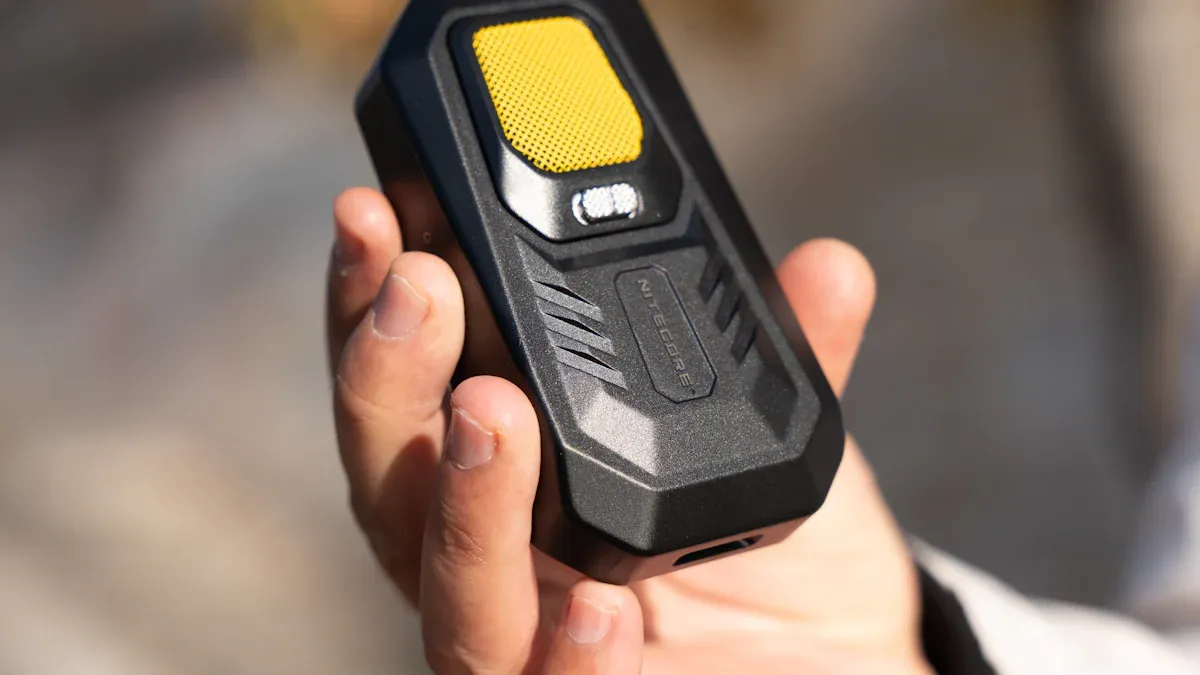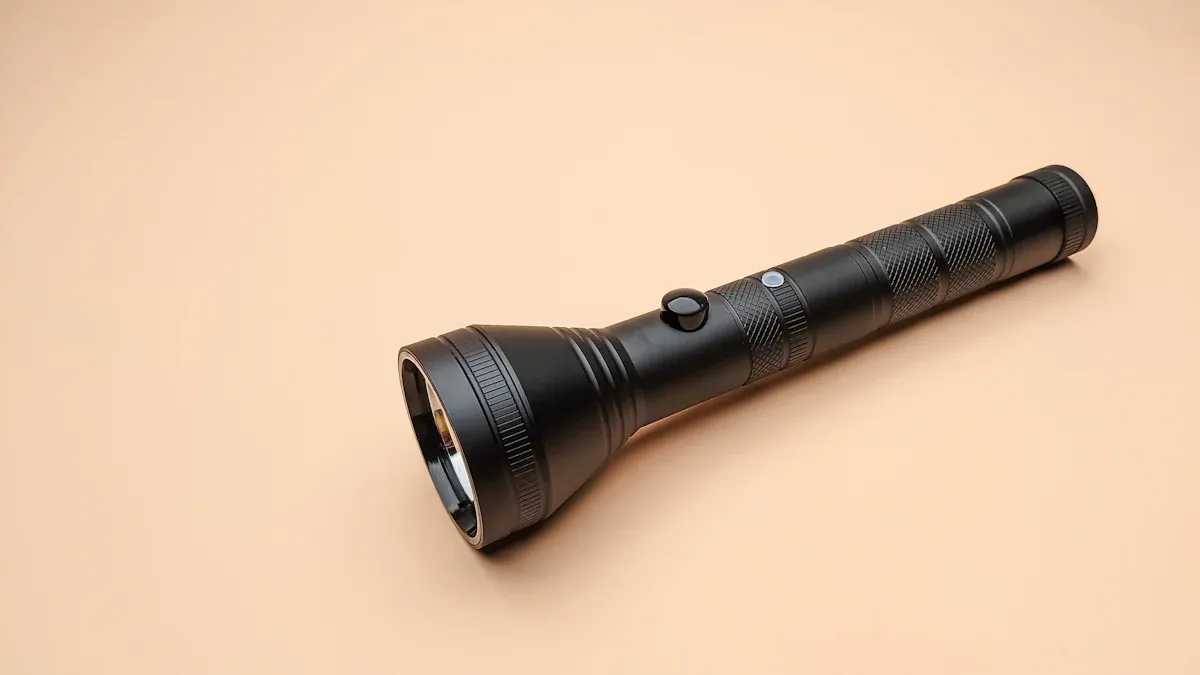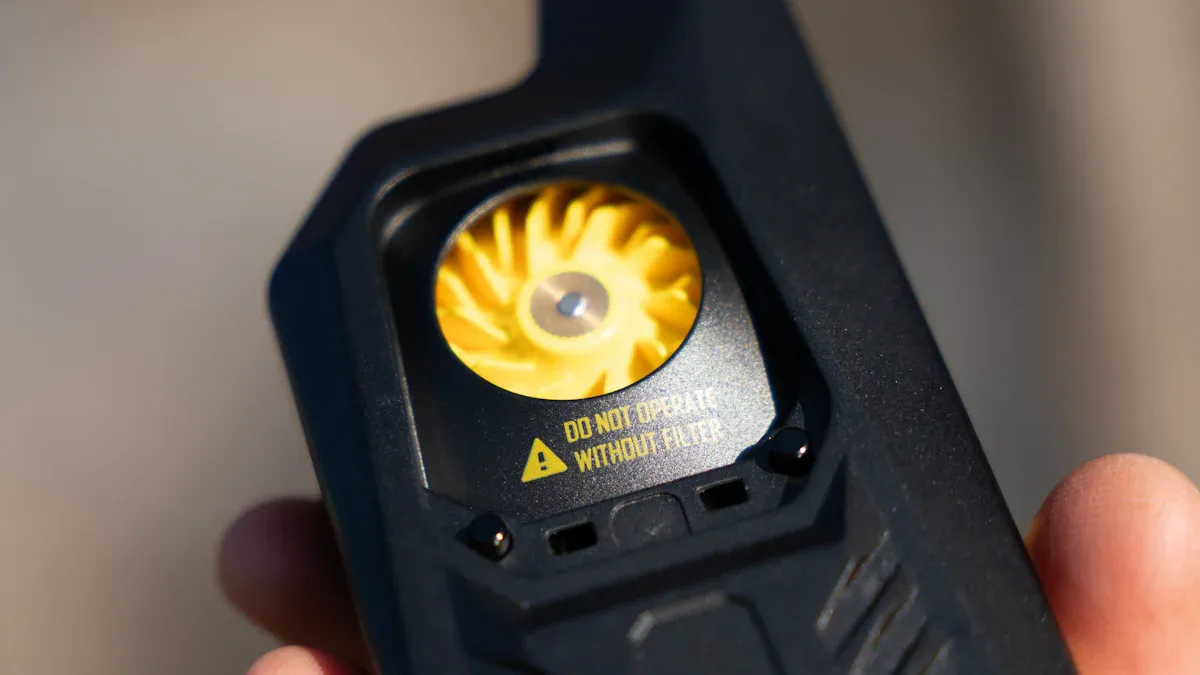Daily Maintenance Guide for Your Helius Flashlight

Taking care of your Helius flashlight every day keeps it reliable and ready for action. Regular cleaning prevents dirt buildup that can affect performance. Checking for damage, like worn O-rings, ensures water resistance stays intact. A little effort goes a long way in avoiding costly repairs and keeping your flashlight shining bright.
Key Takeaways
Taking care of your Helius flashlight daily stops dirt and rust. This helps it work well and last longer.
Always look at the battery area for leaks or harm. This stops it from breaking when you need it most.
Keep it in a cool, dry spot and use the right batteries. This makes your flashlight work better and last longer.
Why Daily Maintenance Matters
Prolonging the Life of Your Helius Flashlight
Daily maintenance is the secret to making your Helius flashlight last longer. When you clean your flashlight regularly, you prevent dirt and grime from building up. This simple step also keeps the battery compartment free from corrosion, which can damage internal components. By taking a few minutes each day to inspect the battery compartment, you ensure everything stays in working order.
Skipping regular maintenance can lead to reduced functionality and even permanent damage over time.
Think of it this way: a little effort now saves you from costly repairs or replacements later. Plus, a well-maintained flashlight is always ready when you need it most.
Ensuring Consistent Light Output
You rely on your flashlight for reliable illumination, whether you're camping, working, or dealing with a power outage. Daily cleaning ensures the lens stays clear, so the light beam remains bright and focused. Dust, smudges, or scratches can dim the output, making your flashlight less effective.
Take a moment to clean your flashlight's exterior and lens with a soft cloth. If you notice flickering or dim light, inspect the battery compartment for loose connections or corrosion. These small steps guarantee optimal performance every time you switch it on.
Avoiding Unexpected Failures
Imagine needing your flashlight in an emergency, only to find it won't turn on. Regular maintenance helps you avoid these frustrating moments. By inspecting the battery compartment daily, you can spot issues like leaking batteries or worn contacts before they cause problems.
Neglecting flashlight maintenance can also lead to higher costs in the long run. For businesses, downtime caused by unreliable equipment can hurt productivity and revenue. Staying proactive with maintenance not only enhances safety but also saves money.
Daily care isn't just about keeping your flashlight clean—it's about ensuring it's always ready to perform when you need it most.
Step-by-Step Daily Maintenance Routine

Cleaning Your Flashlight
Keeping your flashlight clean is essential for maintaining its performance. Dirt and grime can accumulate on the lens and body, reducing light output and causing wear over time. Here's how you can keep your flashlight clean and functional:
Use a soft, clean cloth or a microfiber cloth to wipe down the exterior. Avoid paper towels, as they can scratch the surface.
For the lens, lightly dampen the cloth with lens cleaning fluid or distilled water. Gently clean the lens to remove smudges or dust.
If you notice corrosion in the battery compartment, mix equal parts vinegar or lemon juice with water. Use a cotton swab to clean the affected areas.
Let all parts air dry completely before reassembling the flashlight.
Tip: Follow the manufacturer's instructions for cleaning solutions to avoid damaging your Helius flashlight.
Battery Care and Replacement
Your flashlight's battery is its lifeline. Proper care ensures it performs well when you need it most, especially in emergencies. Here are some tips for battery maintenance:
Replace the battery if it no longer holds a charge or if you notice signs like overheating or visible damage.
Check the battery compartment daily for leaks or corrosion. Clean it immediately if needed.
If your flashlight uses rechargeable batteries, avoid overcharging them to extend their lifespan.
Note: A flashlight with a well-maintained battery will always be ready for action.
Proper Storage for Longevity
Storing your flashlight correctly can significantly extend its lifespan. Improper storage can lead to rust, damage, or reduced performance. Follow these steps for proper storage:
Store your flashlight in a cool, dry place. Avoid extreme temperatures, as they can harm the internal components.
Even if your flashlight is water-resistant, keep it away from moisture to prevent damage to the battery and circuitry.
Use a protective case or pouch to shield your flashlight from dust, dirt, and physical impact.
Tip: Remove the batteries if you won't be using the flashlight for an extended period to prevent leaks.
By following these daily maintenance tips, you can ensure your Helius flashlight stays in top condition and ready for any situation.
Common Issues and Troubleshooting

Flashlight Won’t Turn On
When your flashlight refuses to turn on, it can be frustrating. But don’t worry—most issues are easy to fix. Start by checking the battery. Ensure it’s properly installed and has enough charge. If the battery compartment shows signs of corrosion, clean it with a mix of vinegar and water using a cotton swab.
If the problem persists, inspect the power button. Dirt or debris might block it. Gently clean around the button with a soft cloth. For rechargeable models, confirm the charging cable and port are working. If none of these steps work, the issue might be internal. In that case, contacting the manufacturer or a professional repair service is your best bet.
Flickering or Dim Light
A flickering or dim flashlight often points to a loose connection or a weak battery. First, tighten the flashlight’s components, including the head and tail cap. This ensures all connections are secure. Next, replace the battery if it’s old or damaged. Rechargeable batteries should be fully charged before use.
Cleaning the lens can also help. Dust or smudges may reduce light output. Use a soft cloth and a bit of lens cleaner to restore clarity. If the issue continues, the bulb or LED might need replacement. Always use compatible parts to maintain your flashlight’s performance.
Rapid Battery Drain
Rapid battery drain can shorten your flashlight’s lifespan. To prevent this, avoid leaving the flashlight on for extended periods unnecessarily. Check for power-draining settings, like high brightness modes, and switch to lower settings when possible.
Inspect the battery compartment for leaks or corrosion. Clean it immediately if needed. If you’re using rechargeable batteries, avoid overcharging them. Over time, this can reduce their efficiency. For long-term storage, remove the batteries to prevent unnecessary drain or damage.
Tip: Regular flashlight maintenance keeps these issues at bay and ensures reliable performance.
Pro Tips for Long-Term Care
Use Compatible Batteries
Choosing the right batteries for your flashlight is essential for reliable performance and safety. Not all batteries are created equal, so using compatible ones can make a big difference. For example, LiFePO4 batteries are a great option. They’re long-lasting and have a high cycle life, meaning they can handle many charge and discharge cycles without losing capacity. These batteries also retain their charge longer when not in use, making them perfect for emergencies.
Another benefit is their ability to work in extreme temperatures. Whether you’re camping in the cold or using flashlights in emergencies during a heatwave, these batteries won’t let you down. Plus, they come in various sizes, ensuring compatibility with your Helius flashlight.
Tip: Always check your flashlight’s manual to confirm which batteries are recommended.
Store in a Protective Case
Proper storage is one of the easiest ways to extend your flashlight’s lifespan. A protective case shields it from dust, dirt, and physical damage. It also keeps moisture away, which can harm the battery and internal components.
When storing your flashlight, choose a cool, dry place. Avoid areas with extreme temperatures, as they can damage the flashlight’s circuitry. If you’re not planning to use it for a while, remove the batteries to prevent leaks.
Note: A little care in storage goes a long way in ensuring effective flashlight use.
Inspect and Lubricate Components
Regular inspection and lubrication keep your flashlight in top condition. Start by cleaning the lens with a gentle solution to maintain clear and focused light. Check the battery compartment for corrosion or debris. If you find any, clean it with a mix of vinegar and water.
After cleaning, let all parts air dry completely. Reassemble the flashlight carefully, ensuring the battery compartment cap is secure but not over-tightened. Finally, test the flashlight to confirm it’s working properly.
Pro Tip: Lubricate the O-rings occasionally to maintain water resistance and prevent wear.
By following these essential tips for flashlight maintenance, you’ll ensure your Helius flashlight stays reliable for years to come.
Taking care of your Helius flashlight daily ensures it’s always ready when you need it. Regular cleaning, proper battery care, and smart storage protect your investment and keep it in excellent condition. Start following these tips today to enjoy optimal performance and reliability for years to come. Your flashlight deserves it!
FAQ
How often should you clean your Helius flashlight?
You should clean it daily or after heavy use. Regular cleaning prevents dirt buildup and ensures your flashlight stays in top condition.
Can you use any battery in your Helius flashlight?
No, always use compatible batteries recommended by the manufacturer. Using the wrong type can damage your flashlight or reduce its performance.
Tip: Check your flashlight manual for the best battery options.
What should you do if your flashlight gets wet?
Dry it immediately with a soft cloth. Remove the batteries and let all parts air dry completely before reassembling and testing.
See Also
Key Strategies for Proper Flashlight Upkeep and Care
Comprehensive Handbook for Maintaining and Cleaning Flashlights
In-Depth Review of the Heliusworld Flashlight Model
Helius Tactical Flashlight: Shedding Light on Your Journeys
Explore the Helius Camping Lantern Flashlight with 200-Hour Life
